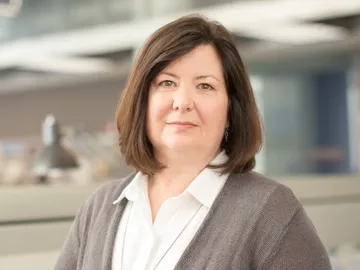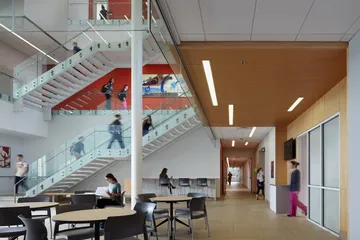What is unique about integrating sustainability into a university or college campus building?
Skip: Even if you set aside the positive, forward-looking direct environmental impacts of integrating sustainable design, these buildings also provide a “rearward looking” opportunity to teach occupants (students & educators) about environmental stewardship. This education can be both passive and active. Passive teaching is accomplished through visible components, such as green roofs or solar shading on windows, whereas active teaching can be achieved through educational elements, such as video displays or interactive kiosks providing information about energy and water usage. Given that university and college campuses already have education as their primary goal, buildings on these campuses are already a natural fit for this kind active and passive teaching.
Mary: It’s also important to recognize that the higher education industry is extremely competitive coupled with the incoming generation of students’ desire to make a positive impact on the environment. By telling their “green story”, campuses can increase their appeal to prospective students. Additionally, by integrating various sustainable design strategies, such as increased daylighting and indoor air quality have a positive impact on learning and teaching spaces, making these buildings more humane to faculty, staff and students. Again, this helps to increase a college or university’s competitive advantage, beyond the positive environmental impact.





